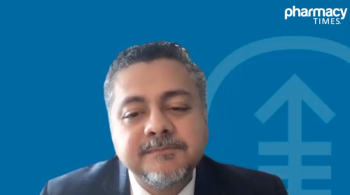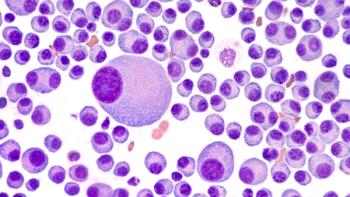
Thinking Beyond Technology: Why a Holistic Approach Is a Better Way to Fight Drug Diversion
Although we have made strides in adopting technology to combat diversion, the uptake of advanced technology is slow and steady.
Drug diversion awareness—and the adoption of advanced technologies such as artificial intelligence (AI) and/or machine learning (ML) embedded within these efforts—has increased significantly since 2019. However,
According to the study, commissioned by Invistics (now part of Wolters Kluwer), more than half (56%) of respondents use (AI/ML) to identify and prevent drug diversion incidents. This is nearly twice the rate of usage reported in 2019, when only 29% of respondents reported this usage. Nevertheless, in 2023, 79% of respondents agree or strongly agree that “most” drug diversion goes undetected—an increase from 2017, 2019, and 2021 surveys.1
It’s important that we examine some of the factors that may contribute to these undetected cases. A lack of staffing to conduct proper investigations is often reported as a leading reason for the increased identification of cases. Despite a record-high reported usage of technology to identify patterns of diversion, many organizations are in the process of making the shift from a person-dependent model to a more automated-driven model, which will enable more efficient and swift detection.1
Additionally, allocating resources to develop and manage drug diversion programs in combination with the use of robust technology to improve surveillance will prove to be invaluable. Many facilities have been challenged with clinical staffing, and the proposition of staffing a dedicated drug diversion team has been out of reach for many years. Combining resources and allotting dedicated time needed to properly identify risk amid staffing shortages, and the associated rise of short-term contracted workers, will undoubtedly provide a shift in these trends.1
Driving Efficient Processes With Technologic Investments
The 2023 survey sheds light on health leaders’ beliefs that technology can bolster their efforts to curb drug diversion. Nearly every health care organization (97%) relies on Automated Dispensing Cabinets (ADC), up from 89% in 2019 to 97% in 2023 as a key component of medication distribution management. Eight in 10 health care organization utilize ADC Reports (eg, anomalous usage reports) to bolster drug diversion surveillance, according to the survey.1
Additionally, the survey results showed that the uptake of ML technology, which learns patterns of behavior and detects potential diversion automatically, has nearly doubled since 2017 from 29% to 56%, indicating a shift in the use of technology to improve these efforts.1
More sophisticated AI/ML solutions are capable of synthesizing multiple data sets and detecting anomalies much earlier (often in just a few days). Advanced analytics usage, combining data from ADC and electronic health records, remains consistent as a key component to the advancement of many drug diversion surveillance programs.1
Providing Solutions Using a Multipronged Approach
What health care organizations need is a more all-encompassing approach to drug diversion, which incorporates 5 key elements:
- Engaging Human Resources Partners
Through working with human resources (HR), it can be beneficial to hire a dedicated drug diversion professional within your organization who can help to ensure the right health care diversion identification and investigation policies are established, and the right technology support is leveraged. Nearly 60% of health care organizations employ at least one dedicated full-time drug diversion professional, up from 45% in 2021. Additionally, working with HR to improve thorough employee background checks, especially for clinical staff who may have worked in different states, may help to improve these efforts. - Clear Organizational Policies. Health care organizations have policies and procedures that explain the penalties for diverting medication, but awareness and enforcement may not always be consistent. Obtaining inter-departmental buy-in, from the executive to entry-level, is critical in supporting the efforts of drug diversion committees. Improving accountability and adherence to protocol, along with encouraging nonpunitive reporting, will likely contribute to improved outcomes.
- Improved Staff Training. Drug diversion is still very much a taboo topic among health leaders. However, nearly 8 in 10 health leaders report having known at least one individual who diverted medication in a health care setting. Training staff on how to recognize common red flags of drug diversion and report them is critical to breaking the cycle of denial or fear over repercussions.
- A compassionate approach to discipline. At-risk clinicians, or those who are actively engaged in their substance use disorder (SUD), need to be made aware of professional assistance programs, which can provide a more compassionate and effective response to clinicians who may desire treatment.2 As Pharmacy Times noted recently, studies show alternative-to-discipline programs are 60% to 90% effective.3
- Robust Technology Is Imperative. Not all AI/ML prevention and detection tools are proven to derive accurate, actionable insights. As a February 2022 retrospective study published by the American Journal of Health-System Pharmacy noted, advanced analytics and machine learning technologies detected known diversion cases an average of 160 days faster than existing, non-machine learning detection methods, and with 96.3% accuracy.4
Interestingly, the 2023 survey revealed that 53% of those who use AI/ML detection tools are “very confident” in their drug diversion programs, while only 23% of those who do not use AI/ML detection tools feel the same level of confidence.1
As organizations look to improve their technology, they should also consider these and other ways to address diversion. When leveraged together, these tactics can significantly curb diversion, help employees with SUDs, and make a health care organization safer for everyone.
About the Author
Stacey McCoy,PharmD, MS, BCPS, has over 20 years of experience as a clinical pharmacist, and currently serves as pharmacy clinical program manager for the Clinical Surveillance & Compliance business at Wolters Kluwer. McCoy most recent clinical practice included more than 12 years of experience as an adult emergency medicine specialist. McCoy's areas of expertise include critical care, acute care cardiology, neurology, neurocritical care, and medication safety.
McCoy completed her doctorate of pharmacy at Mercer University and her bachelor’s and master’s of chemistry at Clark Atlanta University. McCoy also completed her PGY-1 Pharmacy Practice Residency at St Joseph’s/ Candler. McCoy has earned her certificate in pharmacogemonics from the Mayo Clinic and is an active member of the American Society of Health-Systems Pharmacists.
REFERENCES
- The State of Drug Diversion 2023 Report. Wolters Kluwer. September 12, 2023. Accessed January 2, 2024.
https://www.wolterskluwer.com/en/expert-insights/the-state-of-drug-diversion-2023-report - State Programs. Federation of State Physician Health Programs. 2023. Accessed January 2, 2024.
https://www.fsphp.org/state-programs - Webster SM. It Is Time to Consider Alternatives to Discipline Programs. Pharmacy Times Health-System Edition. March 22, 2022. Accessed January 2, 2024. https://www.pharmacytimes.com/view/it-is-time-to-consider-alternatives-to-discipline-programs
- Knight T, May B, Tyson D, McAuley S, Letzkus P, Enright SM. Detecting drug diversion in health-system data using machine learning and advanced analytics. Am J Health Syst Pharm. 2022;79(16):1345-1354. doi:10.1093/ajhp/zxac035
Newsletter
Stay informed on drug updates, treatment guidelines, and pharmacy practice trends—subscribe to Pharmacy Times for weekly clinical insights.




















































































































































































































